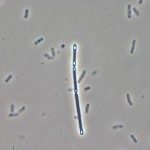Lien vers Pubmed [PMID] – 15611884
Pflugers Arch. 2005 Apr;450(1):13-25
The past decade has seen the achievement of sequencing of human, rat and mouse genomes and the development of high-throughput methods for quantitative monitoring of gene expression. The aim of the beginning post-genomic era is to determine the function of all these genes, a challenge in which the community of physiologists should have a leading role. In this short review, we discuss the relevance, feasibility and impact of transcriptome analysis in renal physiology. Comparison of transcriptomes demonstrates that cell lines are poor physiological models, making it necessary to work on native kidney tissue. Palliating kidney heterogeneity therefore requires the development of methods for transcriptome analysis sensitive enough to be compatible with microdissected nephron segments. Axial comparison of transcriptomes along the human nephron unexpectedly points out that the segmentation of nephrons concerns not only genes involved in solute and water transport functions and their regulation, but also genes related to the control of cell division, differentiation and apoptosis. Comparison of transcriptome of a same nephron segment from mice under different pathophysiological conditions outlines the wide pleiotropy of kidney function regulations. Both types of comparative studies also identify yet unknown transcripts specifically expressed along the nephron or under pathophysiological conditions.
